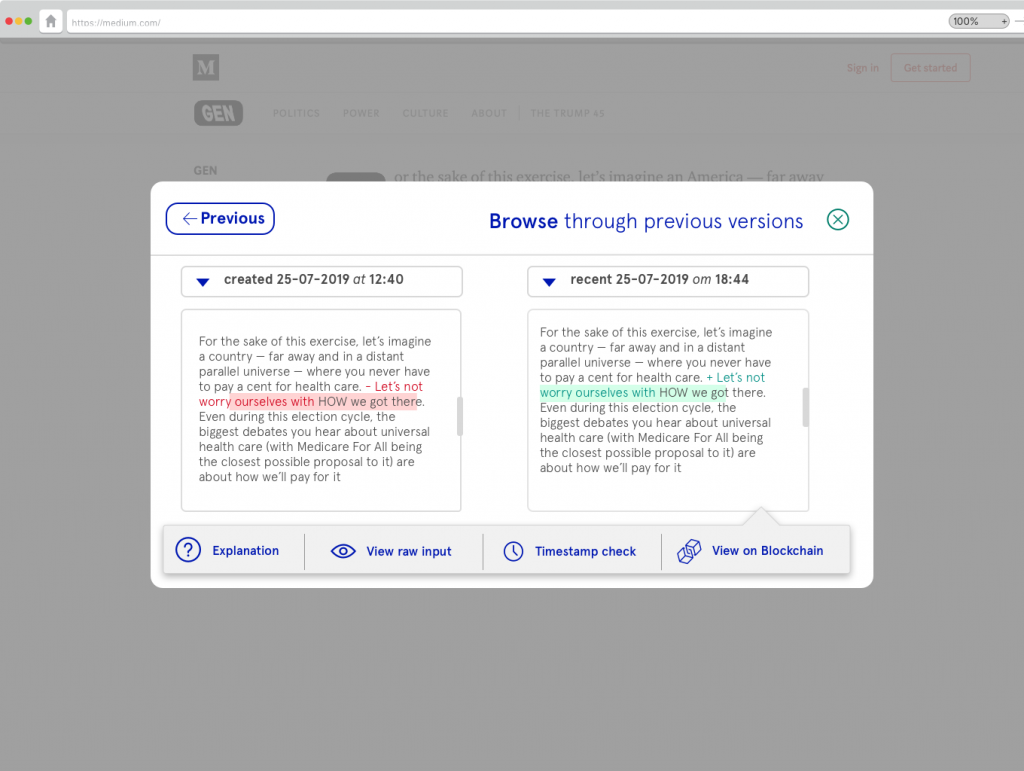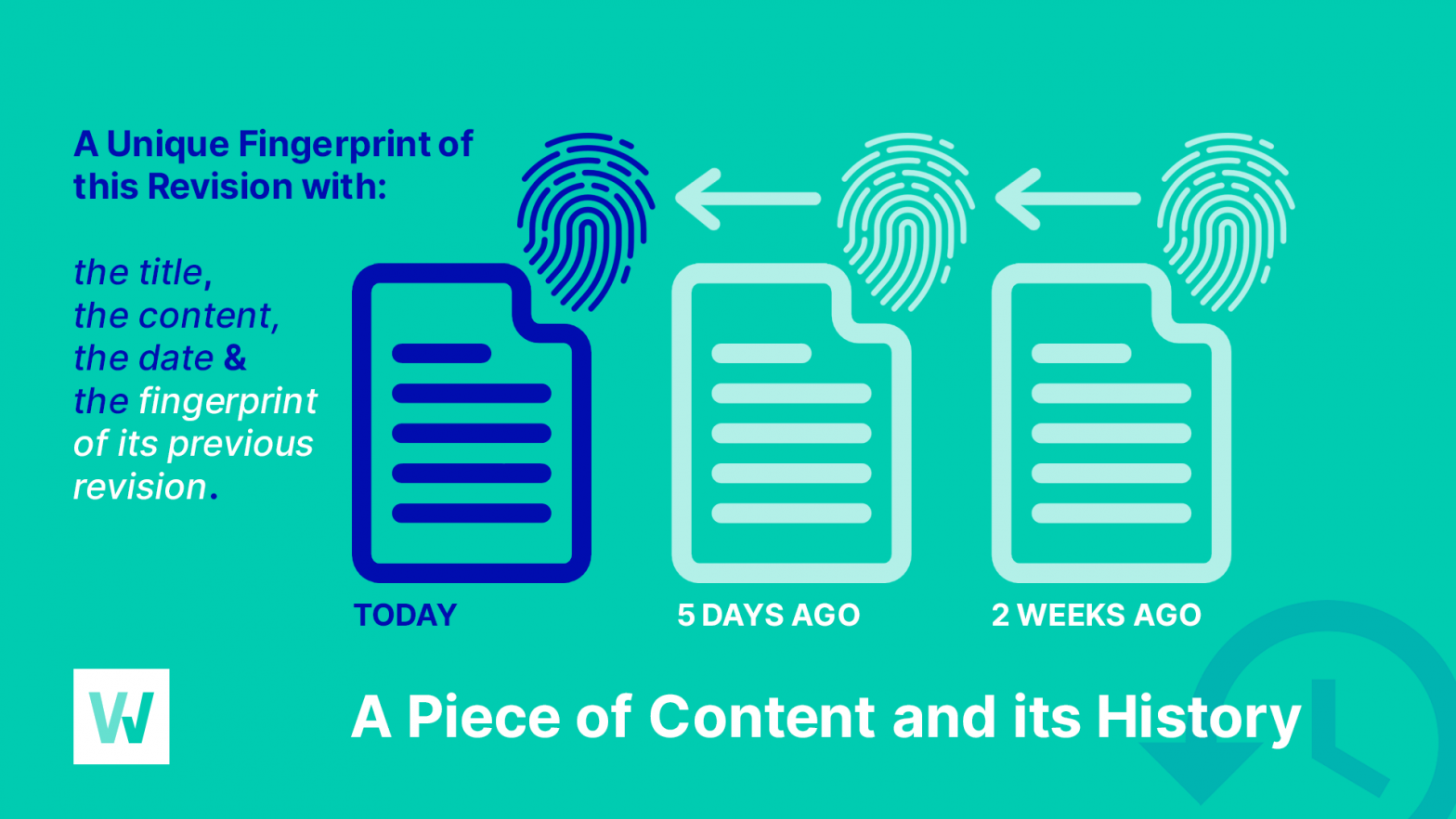The idea is fairly simple: create a unique and universal fingerprint for every piece of content, based on simple inputs such as a title, the content itself and the date. This results in a unique fingerprint, let’s call it a hash. If one of the inputs changes, then the hash changes. That’s it!
Some say it’s an ISBN for online content. I can live with that.
Now that we’ve discovered the big idea together, let’s take it a few steps further. Apart from the title, the content itself and the date, we can add other attributes to the mix. Firstly, let’s commit our hash to the blockchain and secondly, one of my favorites, adding the fingerprint of the previous revision to the mix.
Let me demonstrate what this will enable …
Your Content Timestamp in the Blockchain; let’s Seal the Deal!
Let’s see what happens if you add this unique fingerprint to a blockchain, a public ledger that couldn’t be tampered with. With our unique fingerprint on-chain, we can irrevocably prove that our piece of content existed at the moment of the blockchain transaction. Otherwise, we couldn’t HAVE that fingerprint in the first place. You see?
So, I timestamped the unique hash of my article in a blockchain, all done. I can, forever, prove the existence of my content.
But what if I want to edit it? Let’s see!
Nothing is Right at Once! Simple yet Powerfull: a Chain of your Content’s Revisions
Have you ever written an article that you did improve at a later moment in time? I do that all the time, as I always wake up the other day with ideas to improve my writing.
But what to do if I update my post? Should I timestamp it again? And, more importantly, is my old timestamp invalid by then?
Firstly, YES. You timestamp every iteration of your content and add it to the blockchain. So you can prove the existence of the new iteration.
Secondly, NO. Your old timestamp isn’t invalid, but it’s only valid for the previous iteration of your content.
And I hear you thinking; for many reasons you might want to respect the history of your writing and show that it’s an iteration instead of a newly born one (for example for Authenticity, Credibility, SEO, … you name it).
That’s why we suggest that you add the fingerprint of the previous revision, which has also been stamped to the blockchain to the fingerprint of your NEW iteration (and don’t worry, there are standards for this, and it could all happen on the background, automatically).
Do you see what happens there? Yet, a fully verifiable history, with a paper trail of all your revisions, arises!
Schematically this is what happens:

And whether you keep all revisions of the content publicly available or just the fingerprint (even I make mistakes I want to cover up 🤓), you can ALWAYS prove the existence, development, and ownership of your publications. And a reader/buyer/consumer can ALWAYS check, instead of just trusting the publishers/sellers/whoever sends information/contract and whatsoever. Does that make sense to you?
If you want to show your timestamps: make the blockchain timestamp certificate visible with your content as that helps your reader/buyer to verify your content’s background. It’s not mandatory of course, but it shows transparency, eventually leading to trust. And trust is, literally always, a better idea.
Here’s what a timestamp certificate looks like:

The timestamp certificate, with a link to the blockchain transaction 
Here a reader can scroll through older revisions of content (yes, you can turn this off 🕵️♀️)
So, to give you a brief summary of what we’ve discovered so far:
- The basic inputs from a piece of content lead to a unique fingerprint of this content, called a hash;
- Submitting it to the blockchain creates indisputable proof that this content existed at the moment of the blockchain transaction;
- By adding a hash of the previous revision of this piece of content, you get a closed-loop with the history of this piece of content;
- Showing a blockchain timestamp certificate with your content shows transparency, eventually leading to trust, but it’s not mandatory.
Blockchain timestamps in a nutshell. Pretty cool right?
Now that we’ve got the basics covered, let’s see what revolution timestamping could and should cause, starting … TODAY!
